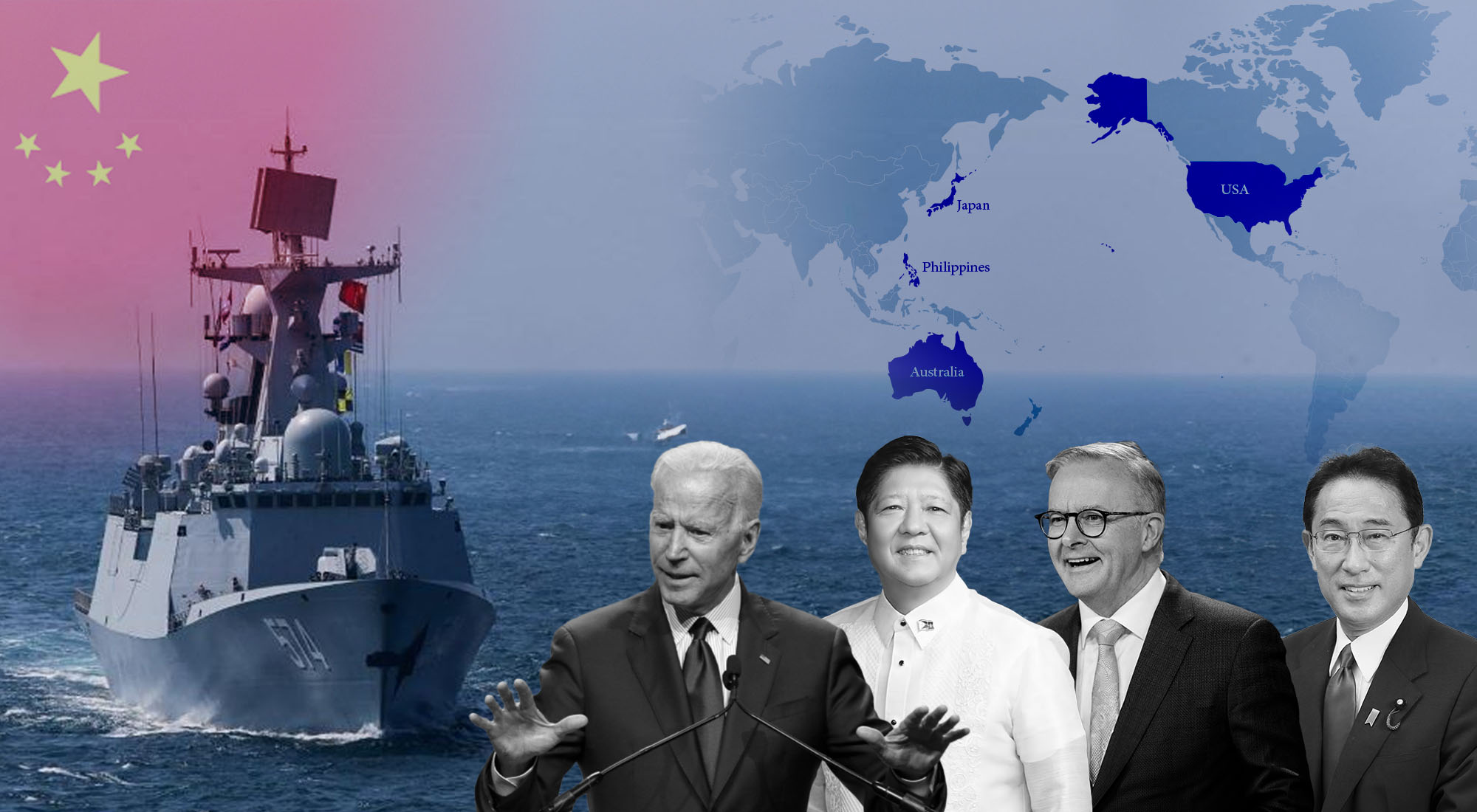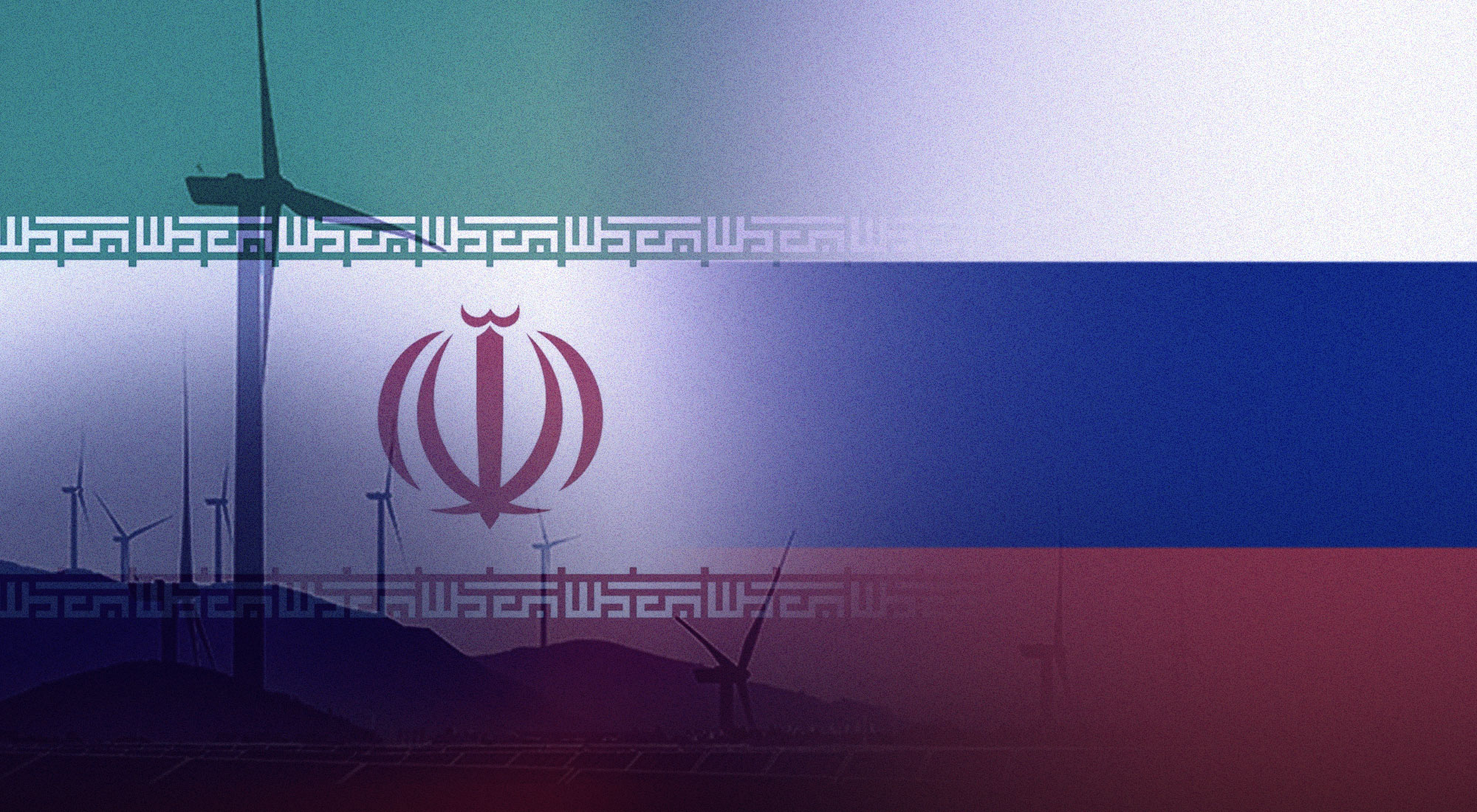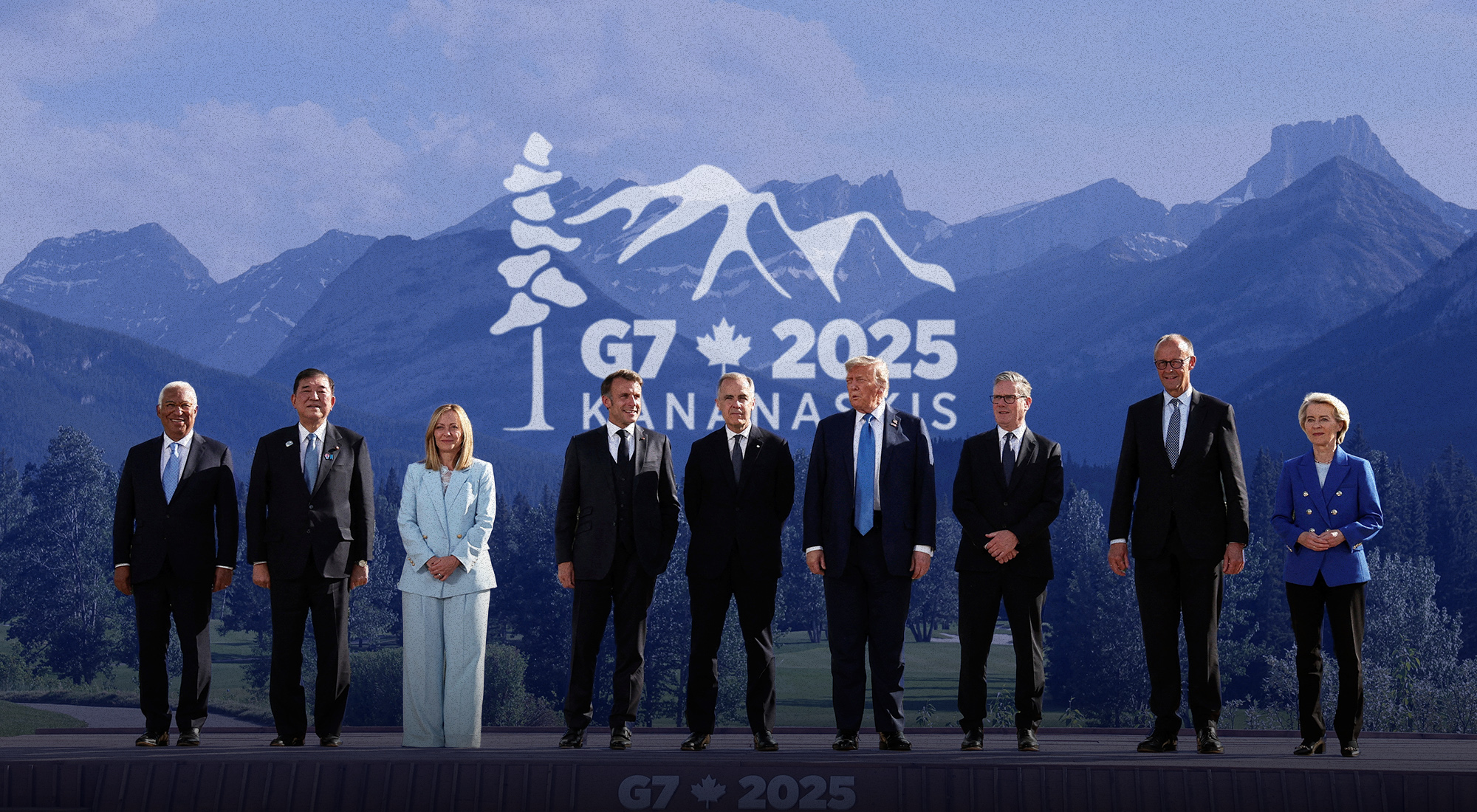Against the backdrop of intensified great power competition and festering maritime disputes in Asia, the Biden administration has adopted proactive defense diplomacy in Asia. Earlier this year, Washington solidified two new ‘minilateral’ security initiatives in tandem with treaty allies in Asia. First came the inaugural Japan-Philippine-U.S. (JAPHUS) trilateral summit in the White House, where President Joe Biden hosted Japanese Prime Minister Fumio Kishida and Philippine President Ferdinand Marcos Jr. The three leaders vowed to embrace a new era of comprehensive cooperation, with a focus on expanded military exercises and strategic investments.[1] Just weeks later, U.S. Secretary of Defense Lloyd Austin hosted his counterparts from the Philippines, Australia and Japan at the U.S. Indo-Pacific Command (INDOPACOM) in Honolulu, Hawaii, where the four allies vowed to, inter alia, regularize joint naval patrols, deepen intelligence-sharing, and pursue full-spectrum interoperability in the region. This effectively cemented a new quadrilateral security grouping, now popularly known as the “Squad.”[2]
By all indications, the original “Quad” (Quadrilateral Security Dialogue) will remain relevant for the foreseeable future, thanks to India’s growing heft in regional affairs. Nevertheless, the U.S. is capitalizing on its improved relations with the Philippines under President Marcos Jr., who has adopted a tougher stance in the South China Sea and a more critical approach to China. Moreover, the Philippines’ geographic location, bordering Taiwan as well as the Western Pacific, makes it an indispensable element to America’s ‘integrated deterrence’ strategy against China. Although this new security grouping enhances the Philippines’ strategic position in the region, a more full-fledged alignment with the U.S. also carries its own set of risks and potential costs.[3]
To begin with, it could threaten the Southeast Asian nation’s ability to effectively ‘hedge’ vis-à-vis competing powers, thus reducing Manila’s room for strategic maneuver. The emergence of the JAPHUS and the new “Squad” could also create other adverse unintended consequences, namely reinforcing China’s sense of encirclement, hence motivating the Asian superpower to take a more assertive position in adjacent waters. Therefore, it’s crucial for the Philippines to ensure it engages its Western partners on its own terms without irrevocably damaging its diplomatic ties with China. On its part, Beijing should also appreciate that the Philippines, as the smaller power, has been acting in a primarily defensive manner. Thus, there is a need for coherent and mature diplomacy to prevent a dangerous escalation and the emergence of a full-blown “New Cold War” in Asia.
An Integrated Deterrence Strategy
Since coming to power, the Biden administration has doubled down on its defense diplomacy in the Indo-Pacific region. In particular, it has sought to establish a network of ‘integrated deterrence’ in order to preserve a so-called ‘rules-based order’ in the Indo-Pacific. For the Pentagon, integrated deterrence pertains to “building a combat credible force across all domains and across the full spectrum of conflict to deter aggression in the face of the pacing threat” from rival powers based on “costs and shared sacrifices” with treaty allies and likeminded powers.[4]
This strategy is in response to two parallel developments. On one hand, there is declining confidence in the Association of Southeast Asian Nations (ASEAN), which has billed itself as the ‘main driver’ of creating a stable and inclusive regional security architecture in the post-Cold War period. Over the past decade, the regional body has been beset by internal divisions and constant indecision, thus undermining its ability to effectively respond to a whole host of crises in its own backyard, most notably the ongoing civil war in Myanmar. Meanwhile, among Western policymaking circles, there is growing concern over China’s growing economic influence and increasingly warm diplomatic ties with strategic elites across Southeast Asia.[5]
Aside from growing questions over so-called “ASEAN centrality”, namely the regional body’s capability and willingness to actively shape the Indo-Pacific security architecture, there are also deepening concerns over potential armed conflict between China and U.S. partners in Asia. On one hand, former U.S. Speaker of the House Nancy Pelosi’s controversial visit to Taiwan in mid-2022, where she met the island nation’s top leaders, ignited a new round of tensions, the so-called “Fourth Taiwan Straits Crisis”. For Beijing, the self-ruling island nation represents a “renegade province”, thus any trend towards what it perceives as ‘secessionism’—namely, pro-independence legislations and foreign policy maneuvers in Taipei—represents a direct threat to China’s core interests.[6]
Accordingly, China maintained that Pelosi’s visit crossed a certain ‘redline’, since it represented a de facto recognition of elected officials in the self-ruling island nation in violation of America’s “One China Policy”. In response, the Asian superpower conducted massive wargames around Taiwan, warned of more decisive intervention should Taipei move towards the declaration of any form of ‘independence’, and, crucially, suspended vital communications channels with the U.S., including military-to-military hotlines.[7] The other major flashpoint is in the South China Sea, where Beijing and Manila have been at loggerheads over a whole host of land features in the resource-rich waters. Over the past year, there have been, at the very least, three instances where Chinese and Philippine maritime forces collided, with Manila accusing the Asian superpower of deploying military-grade laser and water cannon against its resupply and patrol missions near the Second Thomas Shoal and the Scarborough Shoal.[8]
China maintains that its actions are justified since the Philippines has allegedly violated prior informal agreements on managing the disputes in the area. On its part, Manila categorically denies the existence of any prior agreement that would undermine its ability to resupply and fortify its fragile presence over disputed land features. The ASEAN has largely maintained a ‘neutral’ stance on both the Taiwan issue and the South China Sea disputes, although it has been pushing, with limited success so far, for a legally binding Code of Conduct to more effectively manage the latter conflict.[9]
For the Biden administration, however, neutrality is not an option since it has a mutual defense treaty with the Philippines and has a de facto commitment to preserving the ‘status quo’ in Taiwan. In fact, Biden himself has repeatedly emphasized Washington’s commitment to intervene militarily should a third party attack Philippine public vessels, aircraft and soldiers in the South China Sea, while maintaining that he is “not ruling out using U.S. military force” to prevent forcible occupation of Taiwan by any third party.[10] To more effectively respond to potential contingencies, the Biden administration has sought to draw on its ‘hub-and-spokes’ network of alliances and partnerships across the Indo-Pacific. Given its geographic proximity to Taiwan as well as its direct stake in the South China Sea disputes, the Philippines has emerged as a critical component of Washington’s ‘integrated deterrence’ strategy vis-à-vis an assertive China.
The Marcos Factor
Since coming to power in 2022, Marcos Jr. has steadily built on his predecessor’s foreign policy legacy. On one hand, he sought to pursue a ‘new golden era’ of bilateral relations with China, which Marcos Jr. invariably described as a critical partner for national development. In fact, the Filipino president chose Beijing as his first major state visit destination ahead of traditional allies in Washington and Tokyo. At the same time, Marcos Jr. also built on Duterte’s steady yet stealthy foreign policy pivot in his final years in office.[11]
What’s often overlooked by mainstream commentaries is how the broadly pro-Beijing Duterte had actually repaired frayed ties with Washington in mid-2021, especially following U.S. Secretary of Defense Lloyd Austin’s visit in Manila to fully restore bilateral defense ties and discuss America’s COVID-19 vaccine donations to the Philippines. During the China-ASEAN Summit just a few months later, no less than Duterte warned Beijing that the maritime disputes in the South China Sea “does not speak well of the relations between our nations and our partnership.”[12]
Aside from the maritime disputes, the major sticking point in bilateral relations was unfulfilled pledges of Chinese infrastructure investment projects. So when Marcos Jr. failed to secure any major concessions during his visit to Beijing in early 2023, he began to shift gears and, accordingly, doubled down on the Philippines’ military and strategic cooperation with traditional allies. On one hand, he decided to expand the parameters of the Philippine-U.S. Enhanced Defense Cooperation Agreement (EDCA) by granting the Pentagon access to four new bases, including those in the northernmost provinces facing Taiwan.[13] He also pushed for a trilateral security framework with the U.S. and Japan during his early 2023 visit to Tokyo while signing a Strategic Partnership agreement with Australia during Prime Minister Anthony Albanese’s state visit to Manila later that year.[14]
The same year saw the defense chiefs of the Philippines, the U.S., Australia and Japan holding their first-ever quadrilateral meeting on the sidelines of the Shangri-La Dialogue in Singapore. Encouraged by the Philippines’ foreign policy direction, the White House organized the first-ever Japan-Philippine-US (JAPHUS) trilateral summit in Washington in April this year. Just weeks later, the defense chiefs of the U.S., Japan, Australia and the Philippines held their second quadrilateral meeting, where they agreed to enhance maritime security cooperation, including regularized joint patrols in the South China Sea. The emergence of JAPHUS and SQUAD complement pre-existing AUKUS (Australia-UK-US) and Japan-U.S.-Korea trilateral alliances.[15]
Meanwhile, the Quadrilateral Security Dialogue (“Quad”) partnership with India, Australia and Japan represents a core element of America’s regional strategy, although New Delhi has shunned any treaty alliances and maintained a ‘multi-alignment’ strategy in favor of preserving robust defense ties with Moscow as well as generally stable ties with Beijing. [16] For the U.S., its current strategy underscores the need for ‘deterrence’, but it also runs the risk of further escalating tensions in the region by reinforcing Beijing’s concerns over a U.S.-led ‘containment strategy’.
In the words of a Chinese military expert, “The U.S. is clearly trying to rally its allies—Japan and Australia—to support the Philippines, encourage the Philippines to engage in more military provocations in the South China Sea, exacerbate the complexity of the regional situation, and then find excuses to strengthen the military presence of the U.S., Japan and Australia in the South China Sea.”[17]
While the Philippines sees the JAPHUS and SQUAD as a legitimate effort to bolster its strategic position, China sees “[undue] involvement of external countries and forces in South China Sea issues [which] will only further complicate the situation in the region, and flaunting their military power will not only affect normal regional cooperation but may also lead to conflicts.”[18]
Moreover, the Philippines may also end up overly reliant on Western partners, which have yet to provide any substantial strategic investments or high-grade weapons transfers to Manila. On its part, the U.S. is increasingly overstretched by its massive defense commitments to allies across the world, including in ongoing conflicts in Ukraine and the Middle East, while Australia’s defense budget is under strain due to the massive AUKUS nuclear-powered submarine acquisition deal. On its part, Japan, which has now billed itself as a ‘global partner’ for the U.S. in upholding a rules-based international order, is also facing economic stasis and a growing list of commitments across various regions. Not to mention geopolitical uncertainties that a prospective second Trump administration may present next year.[19]
So far, the Philippines has largely relied on more non-aligned nations such as South Korea and India for the bulk of its relatively high-end weapon systems acquisitions. More fundamentally, the Philippines may also undermine its own strategic autonomy and capacity to, similar to other neighboring states, engage in an effective ‘hedging’ strategy. Marcos Jr. has repeatedly emphasized his commitment to maintaining optimal ties with all superpowers and, during his keynote speech at this year’s Shangri-La Dialogue, made it clear that the Philippines is not interested in joining one superpower against another in a brewing New Cold War.[20]
Accordingly, the way forward is a calibrated strategy based on “an insistence on not taking sides or being locked into a rigid alignment” with any of the competing superpowers and commitment to an overall “inclination to diversify and cultivate a fallback position.”[21] It’s important for the Philippines to, similar to its Southeast Asian neighbors such as Vietnam, adopt “opposite or contradicting measures”, which allow to at once deter any potential aggression from external powers as well as maintain robust communication channels with Beijing.[22]
But by embracing a “soft balancing” strategy, entailing more overt military and diplomatic countermeasures, the Philippines runs the risk of sleepwalking into full alignment with the West in a New Cold War with China with potentially dire consequences.[23] On its part, the Asian superpower should appreciate the Philippines’ strategic agency and largely defensive posture; accordingly, China, as the far more powerful party, could help de-escalate tensions by ceasing any provocative actions and gradually restoring bilateral diplomatic channels through negotiating a set of mutually beneficial confidence-building measures, including exploring joint exploration and development of contested resources in the disputed waters as well as an environmental-protection regime in the highly biodiverse South China Sea. Otherwise, both sides would end up in a perilous escalatory dynamic, which could pave the way for great power conflict in one of the most vital regions in the 21st century.
[1] Richard Javad Heydarian, “ A wave of US trilaterals sends a clear message to China,” Lowy Institute, April 2, 2024, https://www.lowyinstitute.org/the-interpreter/wave-us-trilaterals-sends-clear-message-china.
[2] Rahul Mishra, “The “Squad” is a welcome spin-off, but the Quad is the main game,” Lowy Institute, May 24, 2024, https://www.lowyinstitute.org/the-interpreter/squad-welcome-spin-quad-main-game.
[3] Ken Moriyasu, “Philippines first, India later, as US prioritizes ‘Squad’ Allies,” Nikkei Asia, May 8, 2024, https://asia.nikkei.com/Politics/International-relations/Indo-Pacific/Philippines-first-India-later-as-U.S.-prioritizes-Squad-allies.
[4] David Vergun, “Official Says Integrated Deterrence Key to National Defense Strategy,” US Department of Defense, December 6, 2022.
[5] Amitav Acharya, “The Myth of ASEAN Centrality,” Contemporary Southeast Asia 39 no. 2, (August 2017): 273-279.
[6] Ben Blanchard, “Taiwan election is a choice for democracy or China, frontrunner says,” Reuters, November 21, 2023, https://www.reuters.com/world/asia-pacific/taiwan-election-about-choosing-whether-embrace-china-frontrunner-says-2023-11-21/.
[7] Richard Javad Heydarian, “The world’s most dangerous place: Taiwan amid US-China rivalry and the future of the Indo-Pacific,” Trends Research & Advisory, April 11, 2023, https://trendsresearch.org/research.php?id=40&title=The_world’s_most_dangerous_place:_Taiwan_amid_US-China_rivalry_and_the_future_of_the_Indo-Pacific.
[8] Nick Danby, “By, With, And Through the Second Thomas Shoal,” War on the Rocks, May 20, 2024, https://warontherocks.com/2024/05/by-with-and-through-at-the-second-thomas-shoal/.
[9] Ibid.
[10] Jesse Johnson, “Biden says he won’t rule out use of U.S. military to defend Taiwan,” Japan Times, June 5, 2024,
[11] Richard Javad Heydarian, “Gamechanger: Ferdinand Marcos Jr. pivots back to the US amid a new Cold War in Asia,” Trends Research & Advisory, July 10, 2023.
[12] “Philippines’ Duterte tells summit he ‘abhors’ maritime incident involving China,” Reuters, November 22, 2024, https://www.reuters.com/world/asia-pacific/philippines-duterte-tells-summit-he-abhors-maritime-incident-involving-china-2021-11-22/.
[13] Richard Javad Heydarian, “A wave of US trilaterals sends a clear message to China,” op. cit.
[14] See new partnership agreement details at https://www.pm.gov.au/media/stronger-partnership-between-australia-and-philippines.
[15] Richard Javad Heydarian, ““Squad” goals: Consolidating the new quadrilateral partnership,” Lowy Institute, May 9, 2024,
[16] Rahul Mishra, “The “Squad” is a welcome spin-off, but the Quad is the main game,” op. cit.
[17] Xu Keyue, “US-led quadrilateral defense talks deemed to target SCS, exacerbating regional risks,” Global Times, April 28, 2024, https://www.globaltimes.cn/page/202404/1311432.shtml.
[18] Ibid.
[19] James Crabtree. “Why Asia Should Sound the Trump Alarm,” Foreign Policy, March 20, 2024. https://foreignpolicy.com/2024/03/20/asia-trump-us-election-china-geopolitics/.
[20] See Ferdinand Marcos Jr. keynote address, https://pco.gov.ph/presidential-speech/keynote-address-of-president-ferdinand-r-marcos-jr-for-the-21st-iiss-shangri-la-dialogue/.
[21] Cheng-Chwee Kuik, “The Essence of Hedging: Malaysia and Singapore’s Response to a Rising China.” Contemporary Southeast Asia 30, no. 2, (2008), pp. 159–85.
[22] Ibid.
[23] Hunter Marston, “Hunter S Marston, Navigating great power competition: a neoclassical realist view of hedging, International Relations of the Asia-Pacific 24, no. 1, (January 2024), pp. 29–63, https://doi.org/10.1093/irap/lcad001; John Mearsheimer, The Tragedy of Great Power Politics (New York, NY: W. W. Norton & Co., 2001).








